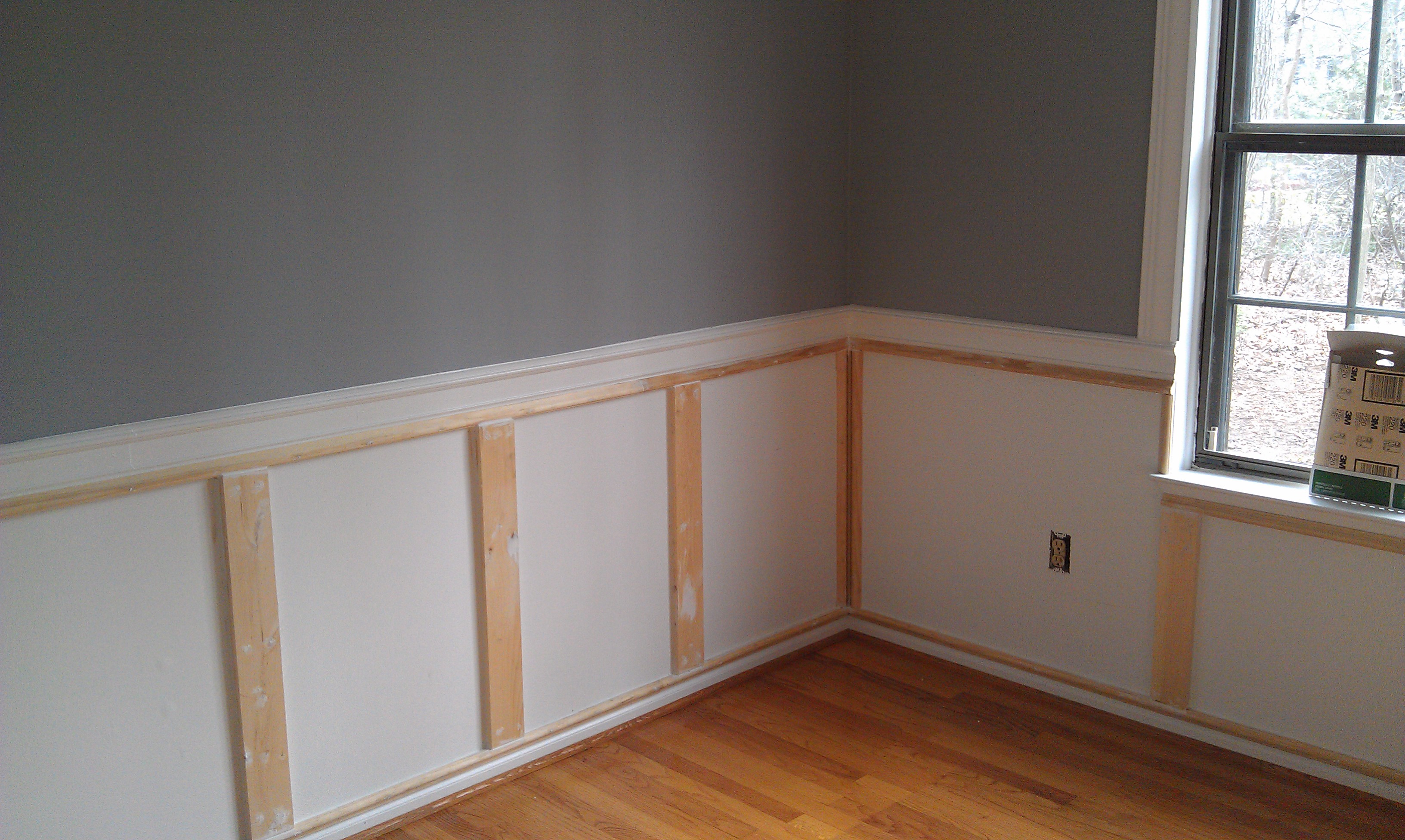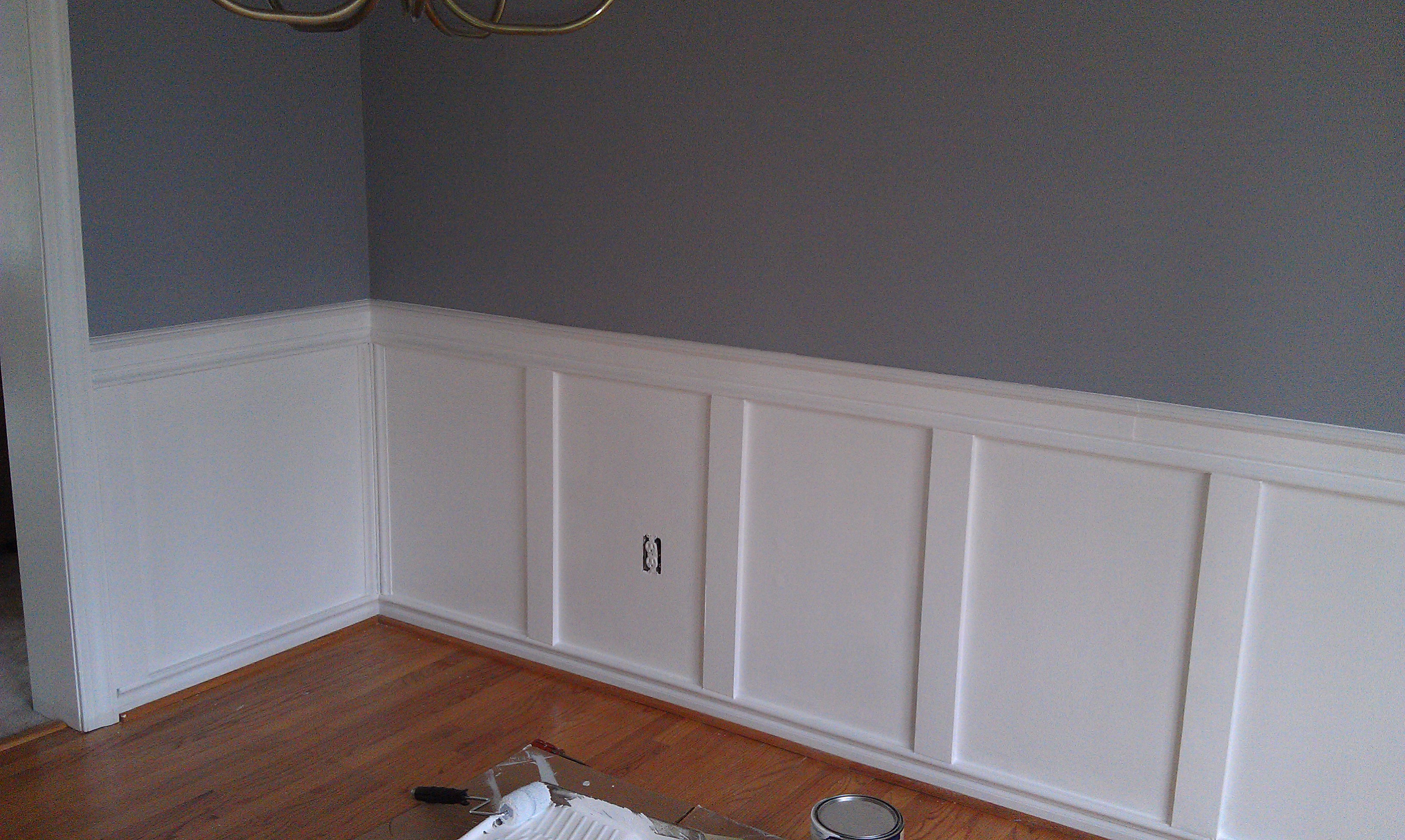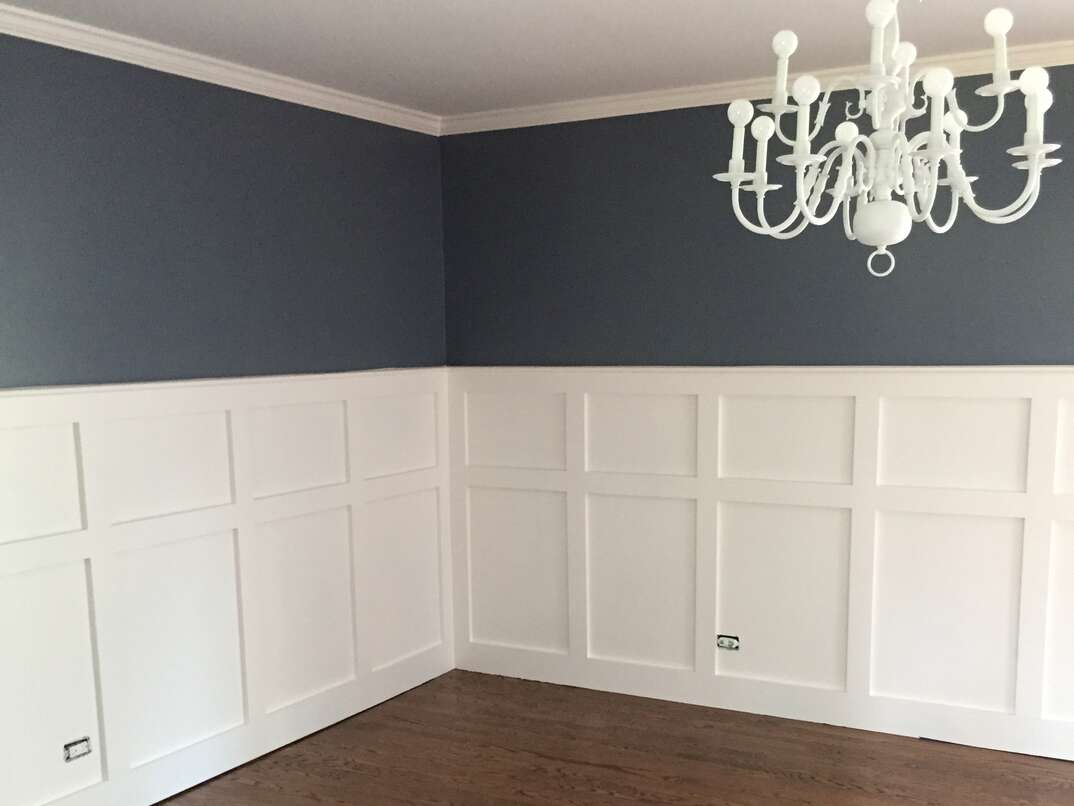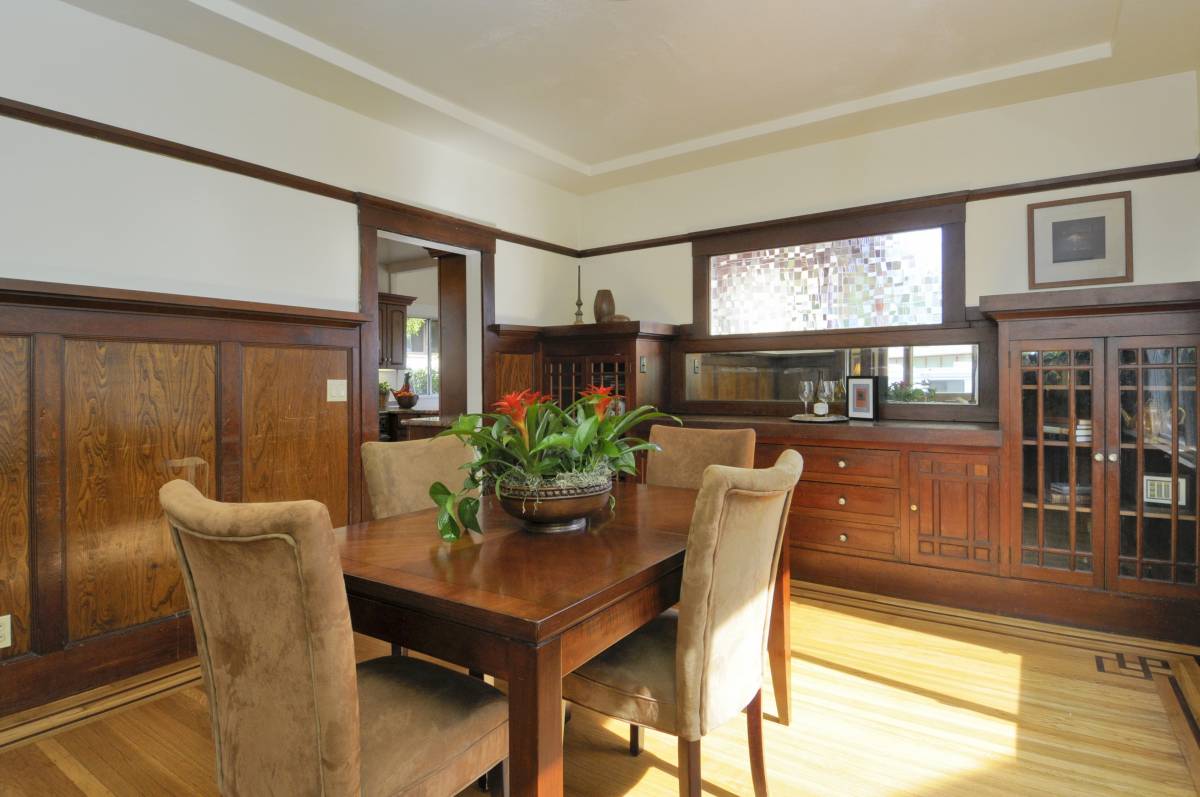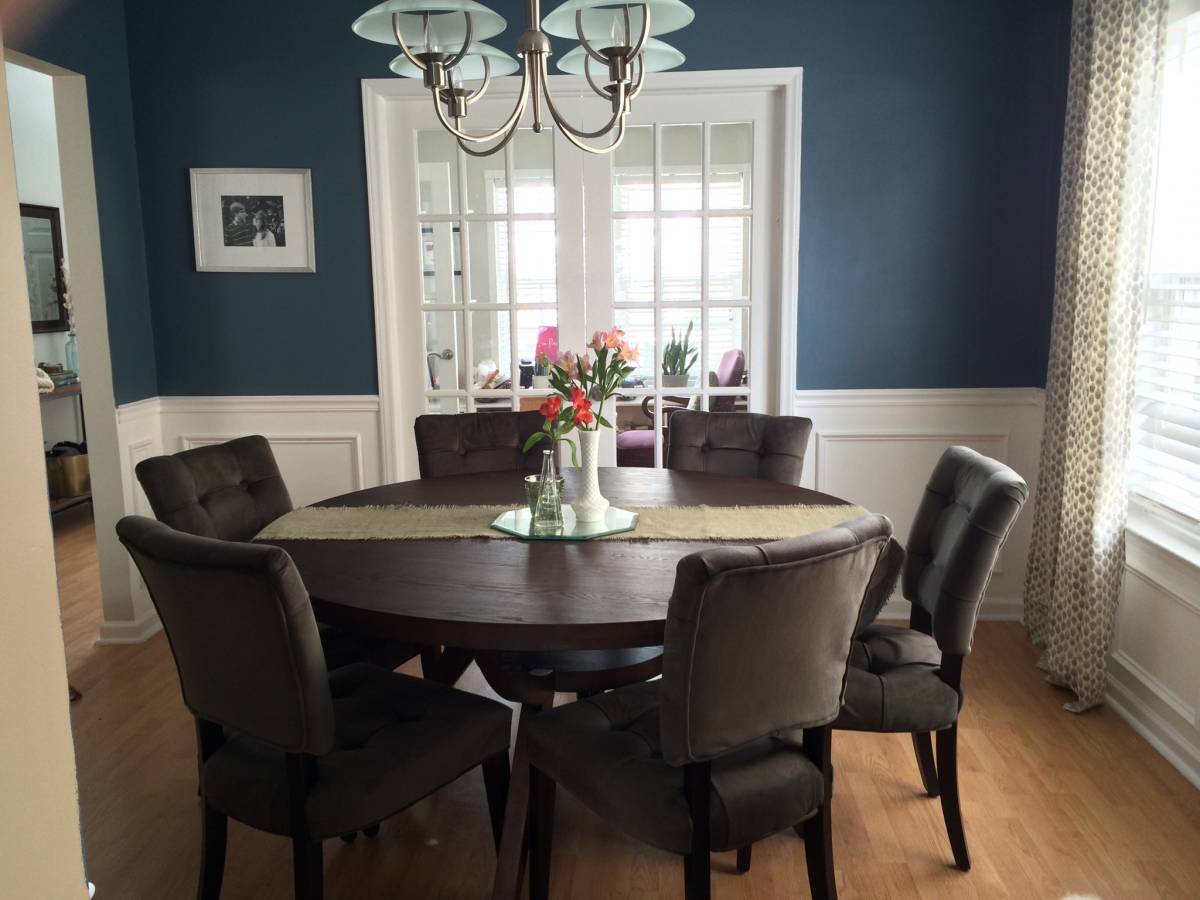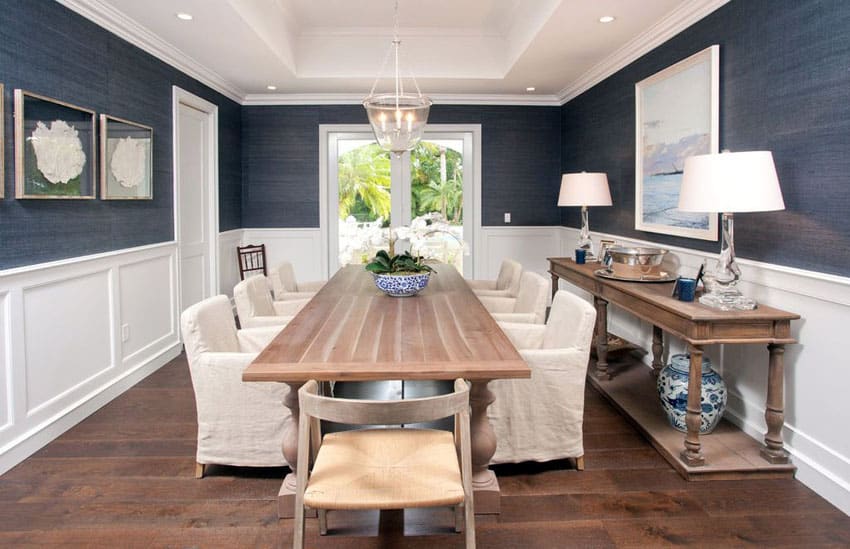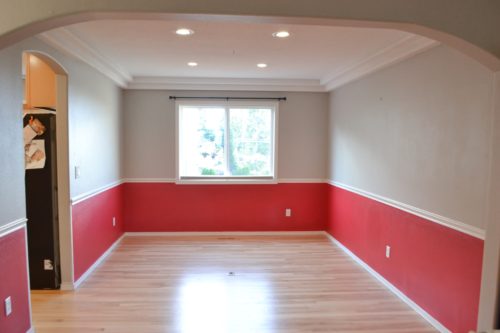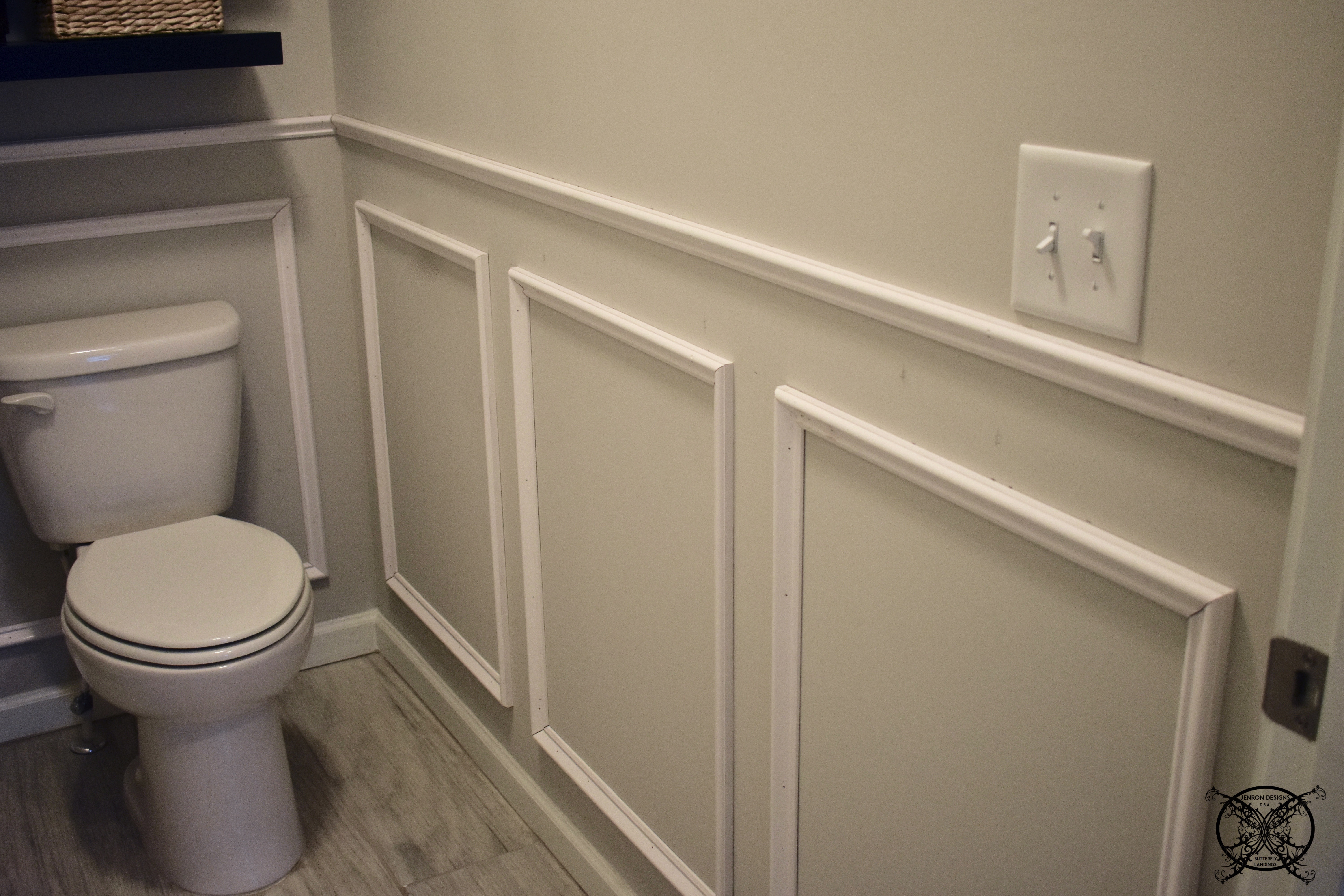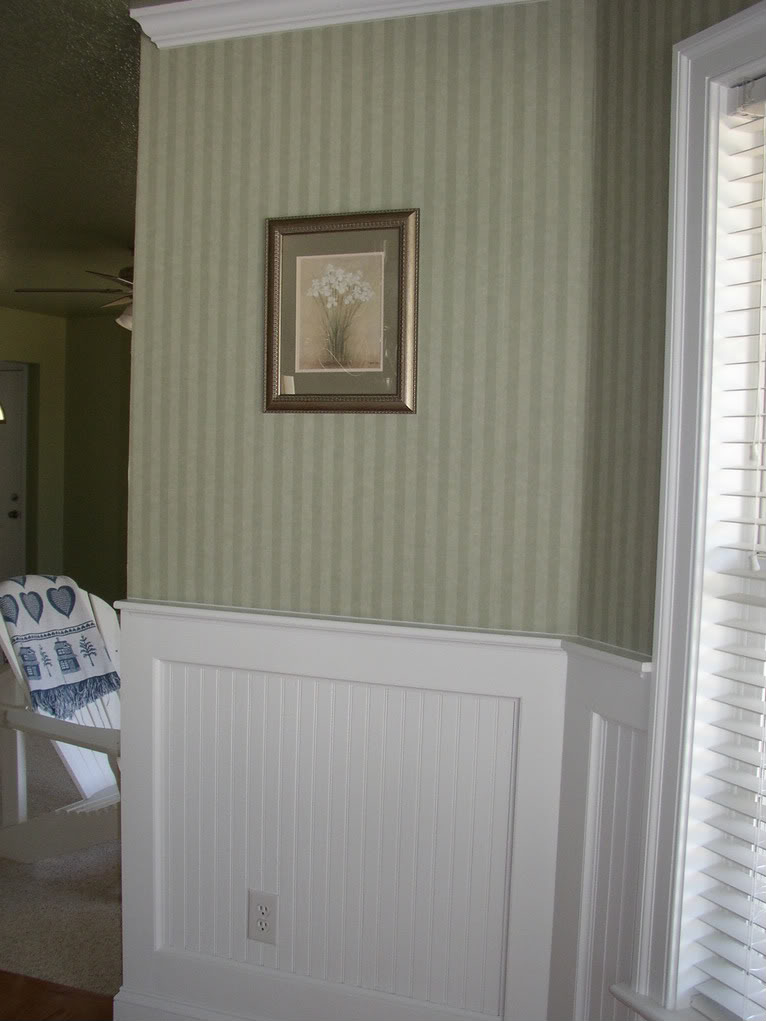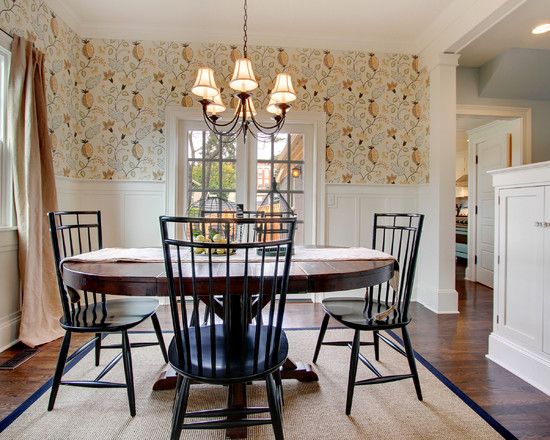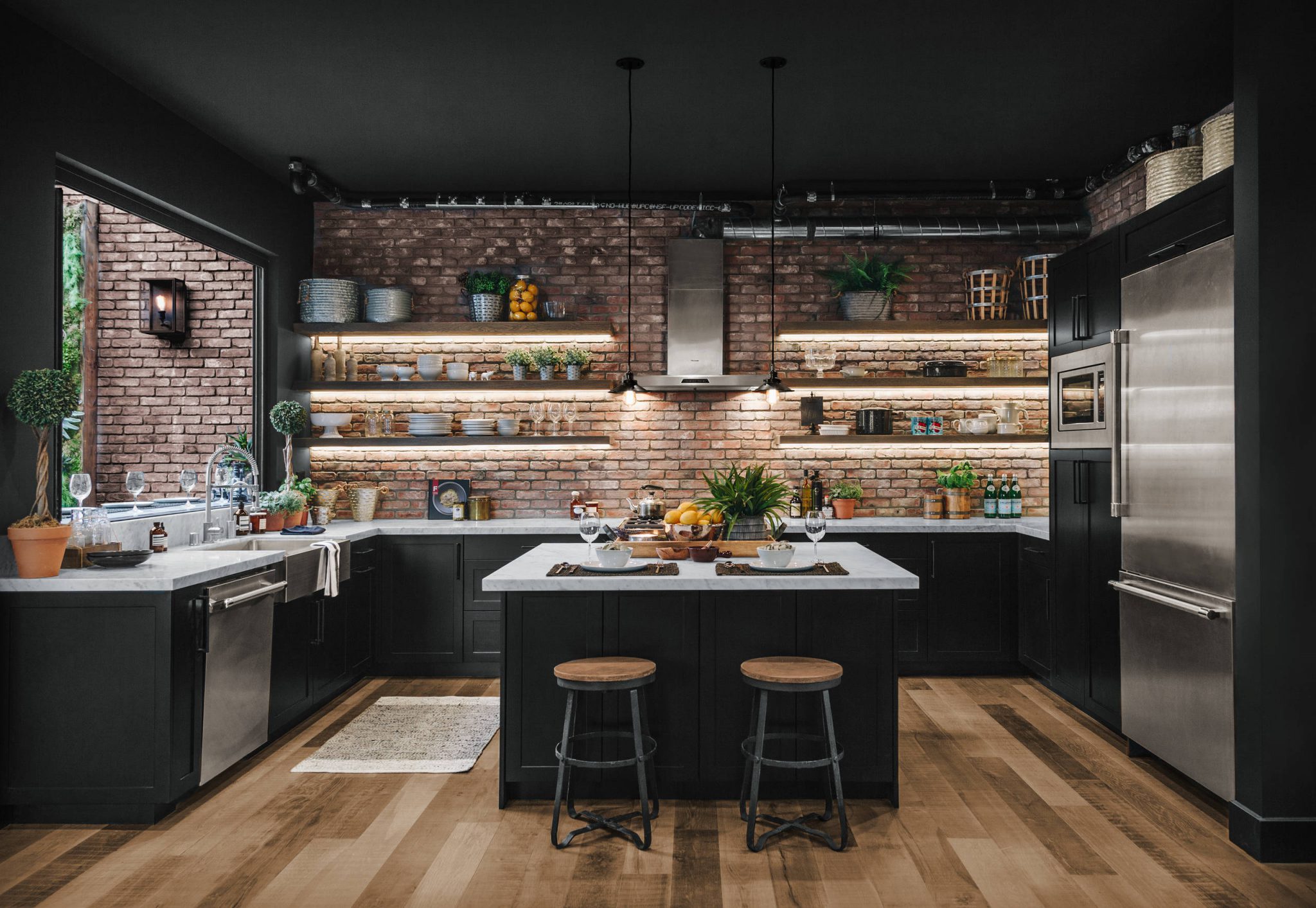Adding wainscoting to your dining room walls is a great way to add texture, depth, and character to the space. There are many different wainscoting ideas that you can incorporate into your dining room design, from traditional to more modern styles. Here are some ideas to help you get started: Crown Molding Wainscoting: Crown molding wainscoting is a classic and elegant design that can add a touch of sophistication to your dining room. It involves installing a strip of decorative molding along the top of the wainscoting panels, giving the room a more traditional and formal feel. Picture Frame Wainscoting: This style of wainscoting features rectangular frames on the wall, creating a picture frame effect. It can be a simple or elaborate design, depending on the size and spacing of the frames. This type of wainscoting is perfect for adding visual interest and can be painted or stained to match your dining room decor. Beadboard Wainscoting: Beadboard wainscoting is a popular choice for dining room walls because it adds a charming cottage or farmhouse feel to the space. It features vertical panels with narrow grooves, giving the walls a textured look and feel. Beadboard wainscoting is also versatile and can be painted or stained in a variety of colors to suit your design style.Wainscoting Ideas for Dining Room Walls
If you're considering installing wainscoting in your dining room, you may be wondering how to go about it. While it may seem like a daunting task, it can actually be a simple and rewarding DIY project. Here are the basic steps to follow: Step 1: Measure and Plan: Start by measuring the length and height of your dining room walls to determine how much wainscoting material you will need. Then, create a plan for the layout of your wainscoting, taking into consideration any windows, doors, or other architectural features on the walls. Step 2: Gather Materials: You will need wainscoting panels, adhesive or nails, a level, a saw, and a measuring tape, among other tools and materials. Make sure to choose high-quality materials and tools for a professional-looking finish. Step 3: Install the Baseboard: Start by installing the baseboard along the bottom of the wall, using adhesive or nails to secure it in place. This will serve as the foundation for your wainscoting panels. Step 4: Install the Panels: Using the measurements and layout plan you created in step 1, begin installing the wainscoting panels on the wall, using adhesive or nails to secure them. Use a level to ensure that the panels are straight and even. Step 5: Add the Top Rail: Once the panels are in place, add the top rail along the top of the wainscoting, using adhesive or nails to secure it. This will add a finishing touch to the wainscoting and hide any imperfections at the top of the panels. Step 6: Finish and Paint: Finally, fill in any nail holes or gaps between the panels and baseboard with wood filler, then sand and paint or stain the wainscoting to your desired color and finish.How to Install Wainscoting in a Dining Room
Wainscoting not only adds architectural interest to a dining room, but it also serves as a blank canvas for decorating. Here are some ideas for incorporating wainscoting into your dining room decor: Use a Bold Color: If you want to make a statement, consider painting your wainscoting a bold color, such as navy blue or emerald green. This will add a pop of color and personality to your dining room. Add Wallpaper: For a more unique and modern look, consider adding wallpaper to the top half of your dining room walls above the wainscoting. This will create a beautiful contrast between the textured wainscoting and the patterned wallpaper. Hang Artwork: Wainscoting can serve as an excellent backdrop for artwork or photographs. Hang a collection of framed prints or photos above the wainscoting to add visual interest and personality to the space. Incorporate Shelves: Wainscoting can also serve as a functional element in your dining room. Consider adding shelves above the wainscoting to display decorative items or store dining essentials, such as plates and glasses.Decorating with Wainscoting in a Dining Room
When it comes to wainscoting styles for dining room walls, the possibilities are endless. Here are some popular styles to consider: Traditional Raised Panel: This style features raised panels with a decorative profile, creating a formal and classic look. Modern Flat Panel: Flat panel wainscoting has a sleek and minimalist look, making it a popular choice for modern dining room designs. Shiplap: Shiplap wainscoting features horizontal panels with a small gap between each one, creating a rustic and coastal feel. Overlay Beadboard: Overlay beadboard wainscoting has a more subtle and understated look, with the panels placed on top of the wall instead of recessed into it.Wainscoting Styles for Dining Room Walls
Installing wainscoting can be a fun and rewarding DIY project for those who are handy and enjoy working with tools. Here are some tips for a successful DIY wainscoting project: Research and Plan: Before starting, make sure to do your research and create a detailed plan for your wainscoting project. This will help ensure that everything goes smoothly and that you have all the necessary materials and tools. Take Your Time: Installing wainscoting can be a time-consuming process, so make sure to take your time and be patient. Rushing through the project can result in mistakes and a less-than-perfect finish. Use Quality Materials and Tools: When it comes to wainscoting, it's important to use high-quality materials and tools for a professional-looking finish. This will also ensure that your wainscoting will last for years to come. Ask for Help: Don't be afraid to ask for help from a friend, family member, or professional if you're feeling overwhelmed or unsure about any part of the project. It's always better to have an extra pair of hands and eyes to help.DIY Wainscoting for Dining Room Walls
When it comes to choosing a color for your wainscoting, you have a few options. You can either match the wainscoting to the color of your walls for a cohesive look, or you can choose a contrasting color to make the wainscoting stand out. Here are some ideas to consider: Neutral Tones: White, cream, and gray are popular choices for wainscoting color as they can easily match any dining room decor and provide a timeless and classic look. Dark Hues: Dark colors, such as navy blue, black, or charcoal gray, can add drama and sophistication to a dining room, especially when paired with lighter walls. Bold Colors: If you want to make a statement, consider painting your wainscoting a bold color, such as emerald green, deep red, or even a bright yellow. This can add a pop of color and personality to the space.Wainscoting Color Ideas for Dining Room Walls
The standard height for wainscoting in a dining room is typically around 36 inches. However, the height can vary depending on personal preference and the style of wainscoting chosen. Here are some things to consider when deciding on the height of your wainscoting: Ceiling Height: The height of your ceiling can play a role in determining the height of your wainscoting. If you have high ceilings, you may want to opt for taller wainscoting to balance out the space. Other Architectural Features: Take into consideration any windows, doors, or other architectural features on the walls when deciding on the height of your wainscoting. You want to make sure everything looks balanced and cohesive. Personal Preference: Ultimately, the height of your wainscoting will come down to personal preference. Take into consideration the overall look and feel you want to achieve in your dining room when deciding on the height.Wainscoting Height for Dining Room Walls
Wainscoting can be made from a variety of materials, each with its own unique look and feel. Here are some popular materials for wainscoting in dining rooms: Wood: Wood is a classic and traditional choice for wainscoting, with options such as oak, pine, and maple. It can be stained or painted to match your dining room decor and is durable and long-lasting. MDF: Medium-density fiberboard (MDF) is a more affordable option for wainscoting. It is made from wood fibers and resins and can be painted or stained to mimic the look of wood. Beadboard: Beadboard wainscoting is typically made from wood or MDF and features vertical panels with narrow grooves. It is a popular choice for adding a cottage or farmhouse feel to a dining room. Tile: For a more unique and modern look, consider using tile for your wainscoting. It is waterproof and easy to clean, making it a practical choice for dining rooms.Wainscoting Materials for Dining Room Walls
Wainscoting can also come in a variety of patterns, adding even more interest and personality to a dining room. Here are some patterns to consider: Herringbone: Herringbone wainscoting features panels laid out in a diagonal or chevron pattern, adding a modern and unique touch to a dining room. Basketweave: Basketweave wainscoting features panels that intersect and overlap, creating a basket-like pattern. This can add texture and dimension to a dining room wall. Geometric: Geometric wainscoting involves using different shapes, such as squares or triangles, to create a pattern on the wall. This can add a modern and playful touch to a dining room. Diagonal: Diagonal wainscoting features panels placed at an angle, creating a dynamic and eye-catching design on the walls.Wainscoting Patterns for Dining Room Walls
When it comes to adding texture and visual interest to a dining room, wainscoting and wallpaper are both great options. Here are some things to consider when deciding between the two: Cost: Wainscoting can be more expensive than wallpaper, especially if you opt for high-quality materials. However, it can also add value to your home and last for many years. Installation: Installing wainscoting can be a more involved process compared to hanging wallpaper. However, if you have the necessary tools and skills, it can be a rewarding DIY project. Design Options: Wainscoting offers a variety of design options, from different styles and materials to patterns and colors. Wallpaper also comes in a variety of designs, but you may be more limited in terms of customization. Functionality: Wainscoting serves as a functional element in a dining room, protecting the walls from damage and providing a surface for hanging artwork or shelves. Wallpaper, on the other hand, is purely decorative. Maintenance: While both wainscoting and wallpaper are relatively easy to clean, wainscoting may require a bit more upkeep and occasional touch-ups if it gets chipped or scratched. Overall, both wainscoting and wallpaper can add style and personality to a dining room. It ultimately comes down to personal preference and the look and feel you want to achieve in your space.Wainscoting vs. Wallpaper for Dining Room Walls
Why Wainscoting is the Perfect Addition to Your Dining Room

Enhance the Aesthetic Appeal of Your Dining Room
 Wainscoting has been a popular design element for centuries, and for good reason. Not only does it add a touch of elegance and charm to any room, but it also serves as a functional and practical addition to your dining room. By installing wainscoting on your dining room walls, you can instantly elevate the aesthetic appeal of the space and create a warm and inviting atmosphere for your family and guests.
Wainscoting has been a popular design element for centuries, and for good reason. Not only does it add a touch of elegance and charm to any room, but it also serves as a functional and practical addition to your dining room. By installing wainscoting on your dining room walls, you can instantly elevate the aesthetic appeal of the space and create a warm and inviting atmosphere for your family and guests.
Protection for Your Walls
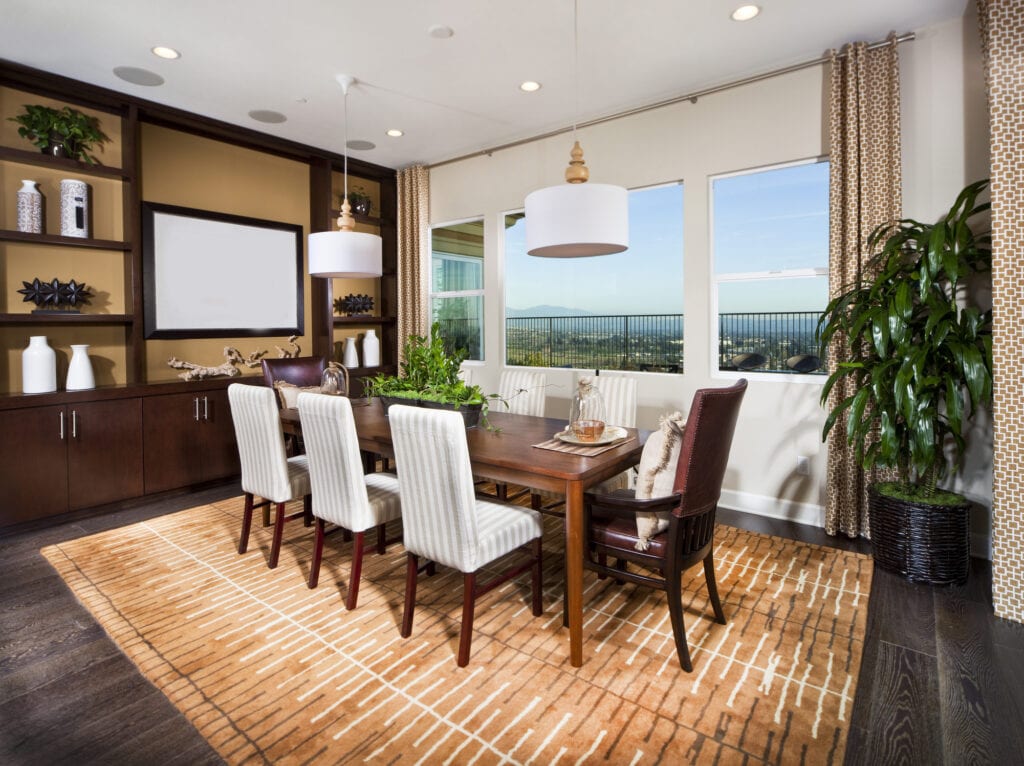 One of the main benefits of wainscoting is its ability to protect your walls from everyday wear and tear. Dining rooms are high-traffic areas, and it's not uncommon for chairs to bump into the walls or for spills to happen during meal times. With wainscoting, you can rest easy knowing that your walls are protected from these potential damages. This is especially important if you have young children or frequently entertain guests in your dining room.
One of the main benefits of wainscoting is its ability to protect your walls from everyday wear and tear. Dining rooms are high-traffic areas, and it's not uncommon for chairs to bump into the walls or for spills to happen during meal times. With wainscoting, you can rest easy knowing that your walls are protected from these potential damages. This is especially important if you have young children or frequently entertain guests in your dining room.
Unlimited Design Options
 Wainscoting comes in a variety of styles, materials, and colors, making it a versatile design element that can complement any dining room decor. Whether you prefer a traditional look with classic wood paneling or a more modern and sleek design with painted wainscoting, there are endless options to choose from. You can also incorporate other design elements, such as wallpaper or molding, to customize the look and feel of your wainscoting and truly make it your own.
Wainscoting comes in a variety of styles, materials, and colors, making it a versatile design element that can complement any dining room decor. Whether you prefer a traditional look with classic wood paneling or a more modern and sleek design with painted wainscoting, there are endless options to choose from. You can also incorporate other design elements, such as wallpaper or molding, to customize the look and feel of your wainscoting and truly make it your own.
Easy Maintenance
 Another advantage of wainscoting is its low maintenance requirements. Unlike wallpaper or paint, wainscoting is incredibly durable and can withstand the wear and tear of daily use. It's also easy to clean, requiring only a quick wipe down with a damp cloth to remove any dust or dirt. This makes it a great choice for busy households or those who want a stylish yet low-maintenance dining room.
In conclusion,
wainscoting is the perfect addition to your dining room because it enhances the overall aesthetic appeal of the space, provides protection for your walls, offers unlimited design options, and is easy to maintain. Whether you're looking to spruce up your dining room for everyday use or impress your guests during special occasions, wainscoting is a timeless and functional design element that will add character and charm to your home. So why wait? Start planning your wainscoting project and transform your dining room into a stunning and sophisticated space.
Another advantage of wainscoting is its low maintenance requirements. Unlike wallpaper or paint, wainscoting is incredibly durable and can withstand the wear and tear of daily use. It's also easy to clean, requiring only a quick wipe down with a damp cloth to remove any dust or dirt. This makes it a great choice for busy households or those who want a stylish yet low-maintenance dining room.
In conclusion,
wainscoting is the perfect addition to your dining room because it enhances the overall aesthetic appeal of the space, provides protection for your walls, offers unlimited design options, and is easy to maintain. Whether you're looking to spruce up your dining room for everyday use or impress your guests during special occasions, wainscoting is a timeless and functional design element that will add character and charm to your home. So why wait? Start planning your wainscoting project and transform your dining room into a stunning and sophisticated space.





